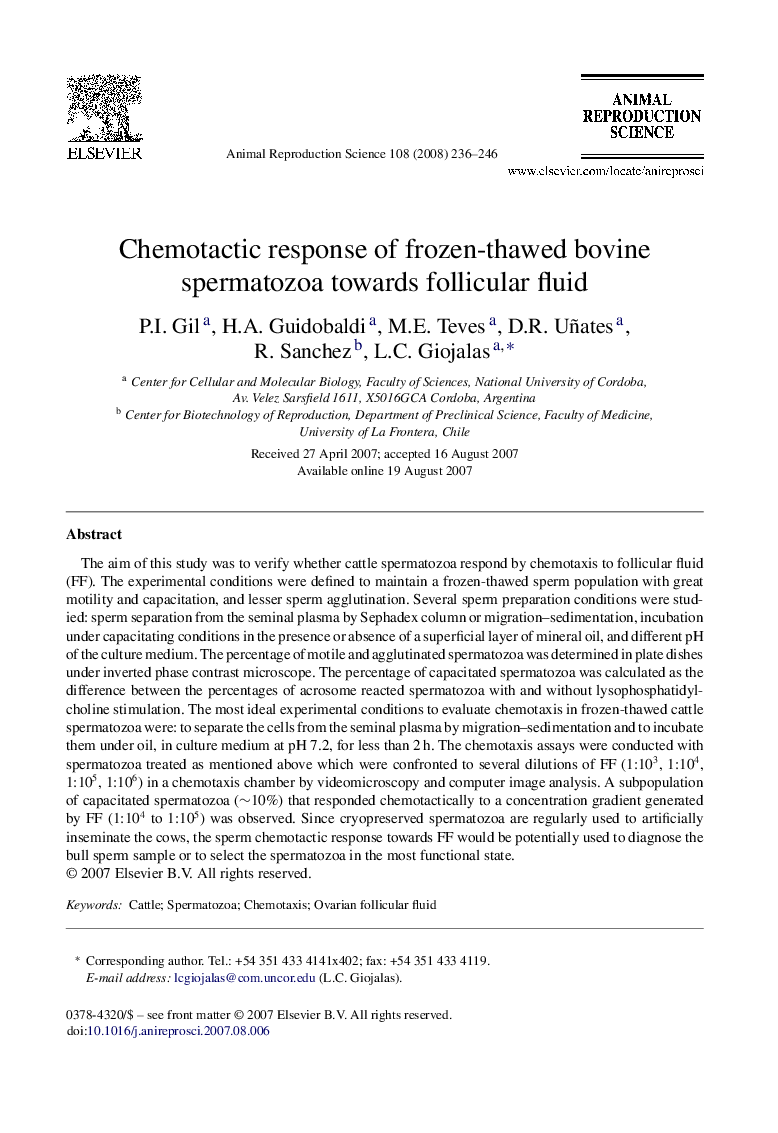| Article ID | Journal | Published Year | Pages | File Type |
|---|---|---|---|---|
| 2074680 | Animal Reproduction Science | 2008 | 11 Pages |
The aim of this study was to verify whether cattle spermatozoa respond by chemotaxis to follicular fluid (FF). The experimental conditions were defined to maintain a frozen-thawed sperm population with great motility and capacitation, and lesser sperm agglutination. Several sperm preparation conditions were studied: sperm separation from the seminal plasma by Sephadex column or migration–sedimentation, incubation under capacitating conditions in the presence or absence of a superficial layer of mineral oil, and different pH of the culture medium. The percentage of motile and agglutinated spermatozoa was determined in plate dishes under inverted phase contrast microscope. The percentage of capacitated spermatozoa was calculated as the difference between the percentages of acrosome reacted spermatozoa with and without lysophosphatidylcholine stimulation. The most ideal experimental conditions to evaluate chemotaxis in frozen-thawed cattle spermatozoa were: to separate the cells from the seminal plasma by migration–sedimentation and to incubate them under oil, in culture medium at pH 7.2, for less than 2 h. The chemotaxis assays were conducted with spermatozoa treated as mentioned above which were confronted to several dilutions of FF (1:103, 1:104, 1:105, 1:106) in a chemotaxis chamber by videomicroscopy and computer image analysis. A subpopulation of capacitated spermatozoa (∼10%) that responded chemotactically to a concentration gradient generated by FF (1:104 to 1:105) was observed. Since cryopreserved spermatozoa are regularly used to artificially inseminate the cows, the sperm chemotactic response towards FF would be potentially used to diagnose the bull sperm sample or to select the spermatozoa in the most functional state.
